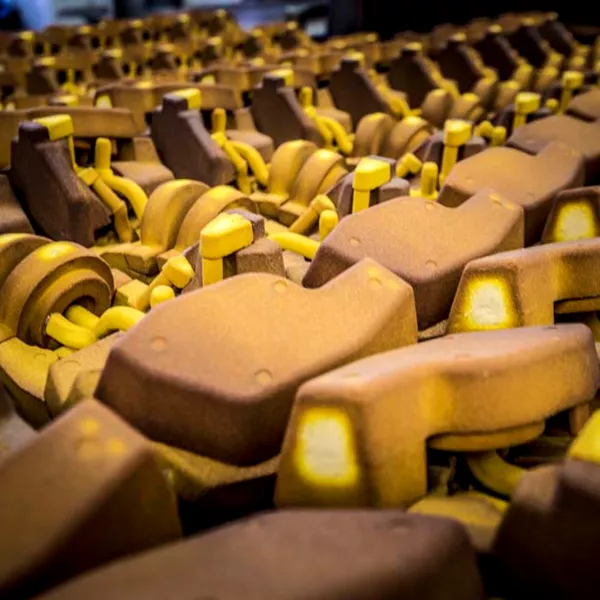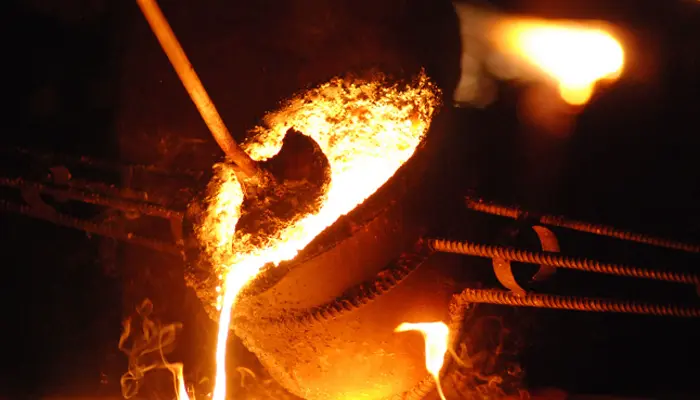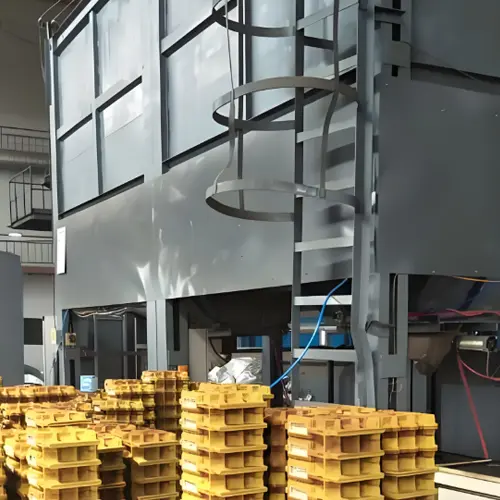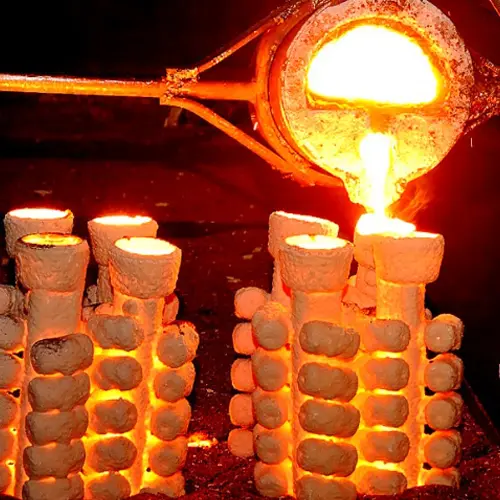Coated sand shell casting is a precision casting process that is widely used in the production of metal castings with high dimensional accuracy, good surface quality and complex structure. The core is to form a thin shell cavity on the mold surface through resin coated sand, and then cast it. The following is a detailed introduction to the process:
1. Principle of coated sand shell casting process
Coated sand is a composite material composed of quartz sand, thermosetting resin (such as phenolic resin) and curing agent. Its process feature is to use a heated metal mold to heat and solidify the coated sand to form a hollow thin shell cavity, and then obtain the casting by pouring molten metal. Due to the thin shell (usually 5-15mm) and good air permeability, the casting cools quickly, which can significantly improve the accuracy and surface quality of the casting.
2. Process flow
2.1. Mold preheating
The metal mold (usually a steel mold) is preheated to 200-300℃ to ensure that the coated sand solidifies quickly when it contacts the mold.
2.2. Preparation of coated sand
Coated sand consists of raw sand (silica sand or zirconium sand), resin (2-5%), curing agent (urotropine) and lubricant (calcium stearate). The resin melts at high temperature and wraps the sand particles to form a bonding layer.
2.3. Shell making process
Sand shooting: The coated sand is shot into the heated mold by a sand shooting machine, and the sand particles accumulate on the surface of the mold.
Curing: The mold is kept at a high temperature (about 250°C), and the resin is cross-linked and cured within 30-60 seconds to form a hard sand shell.
Demolding: After the mold is opened, the uncured loose sand core automatically falls off to form a hollow shell mold (usually a two-half shell mold).
Mold closing: The two halves of the shell mold are bonded with an adhesive to form a complete cavity.
2.4. Pouring and cooling
Molten metal (such as cast iron, aluminum alloy) is poured into the shell mold, and the molten metal fills the cavity and cools and solidifies.
The shell mold is gradually burned at high temperature, which is convenient for subsequent cleaning.
2.5. Post-processing
Remove the shell mold residue, perform shot blasting, grinding and other treatments to obtain the finished casting.
3. Key equipment and materials
3.1. Equipment
Core shooter/sand shooter: used to shoot coated sand into the mold.
Heating mold system: metal mold heated by electricity or gas.
Mold clamping machine and bonding equipment: used for shell bonding.
Pouring and cooling line: automated pouring system.
3.2. Material properties
Coated sand: must have high strength, high temperature resistance (above 300°C), and low gas emission.
Resin type: phenolic resin is the most commonly used, and environmentally friendly resins (such as bio-based resins) are gradually promoted.
Recycled sand: old sand can be reused after crushing, screening, and de-filming to reduce costs.
4. Process advantages
4.1. High precision and surface quality
The casting size tolerance can reach CT6-CT8 level, and the surface roughness Ra 6.3-12.5μm, reducing the amount of subsequent processing.
4.2. Adaptability to complex structures
Suitable for castings with thin walls (minimum 1-2mm) and complex inner cavities, such as automobile engine cylinders, hydraulic valve bodies, etc.
4.3. High production efficiency
Short shell mold making time, suitable for mass production; long mold life (up to tens of thousands of times).
4.4. Environmental protection and resource conservation
The amount of shell mold sand used is small (only 10-20% of traditional sand molds), and the recovery rate of old sand can reach more than 90%.
5. Limitations
5.1. High cost
The price of coated sand is higher than that of ordinary sand, and the mold manufacturing cost is higher, which is suitable for medium and large batch production.
5.2. Strict process control
Parameters such as mold temperature, sand injection pressure, and curing time need to be precisely controlled, otherwise it is easy to cause shell defects.
5.3. Size restrictions
Suitable for small and medium-sized castings (usually <50kg), and the shell mold strength of large castings is insufficient.
6. Typical application areas
6.1. Automobile industry
Engine cylinder head, crankshaft, turbocharger housing, etc.
6.2. Machinery manufacturing
Precision parts such as pump bodies, valves, gear boxes, etc.
6.3. Aerospace
Lightweight parts of aluminum alloy and magnesium alloy.
6.4. Hydraulic components
High-pressure valve bodies and joints with complex flow channels.
7. Common defects and countermeasures
7.1. Insufficient shell strength
Reason: Low resin content or incomplete curing.
Countermeasure: Adjust the resin ratio and optimize the heating temperature and time.
7.2. Casting pores
Reason: The coated sand has a large amount of gas or poor air permeability.
Countermeasure: Select low-gassing resin and increase the design of vent holes.
7.3. Sand sticking
Reason: Insufficient refractoriness of sand particles or excessively high pouring temperature.
Countermeasure: Use high-refractory sand such as zircon sand to reduce the pouring temperature.
8. Technology development trend
8.1. 3D printing shell
Combined with 3D printing technology to directly form complex shells, it saves mold costs and is suitable for small-batch customized production.
8.2. Environmentally friendly coated sand
Develop formaldehyde-free resin and low-temperature curing resin to reduce pollution and energy consumption.
8.3. Intelligent control
Introducing AI algorithms to optimize process parameters and improve yield rate.
Summary
Coated sand shell casting has become an important process for precision casting with high precision, high efficiency and excellent surface quality, especially suitable for mass production of complex thin-walled parts. With the advancement of materials and intelligent technology, its application scope will be further expanded and play a greater role in the field of high-end manufacturing.






